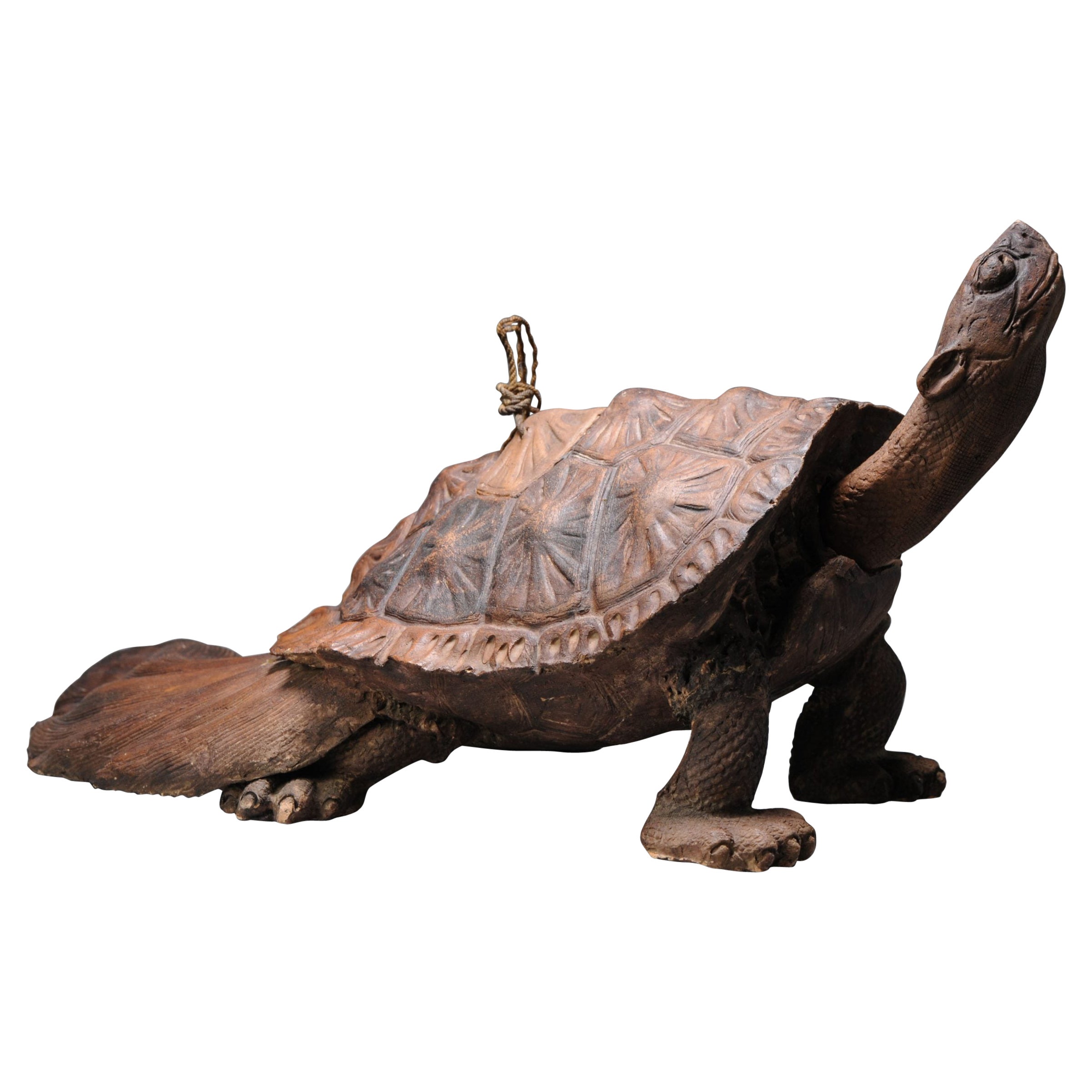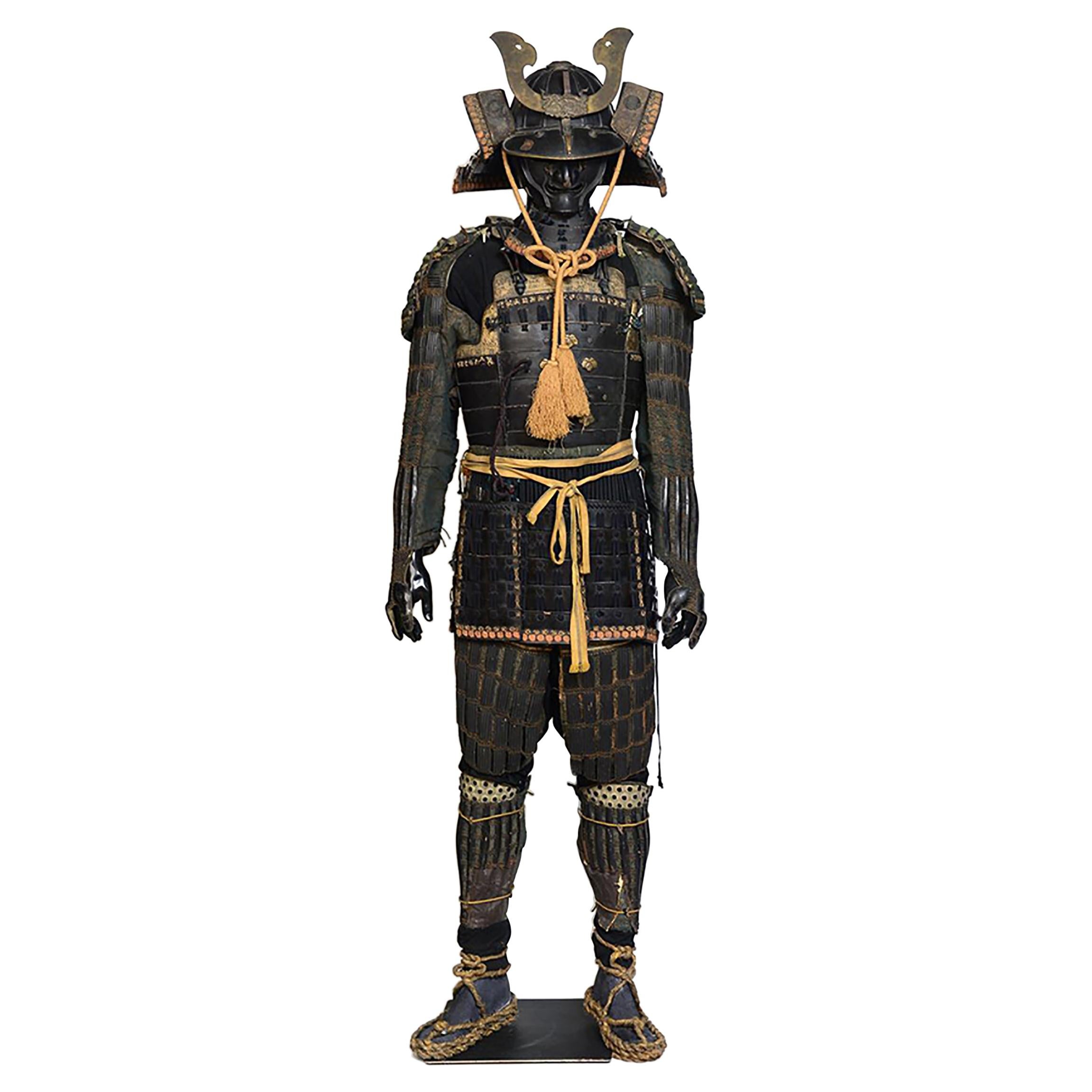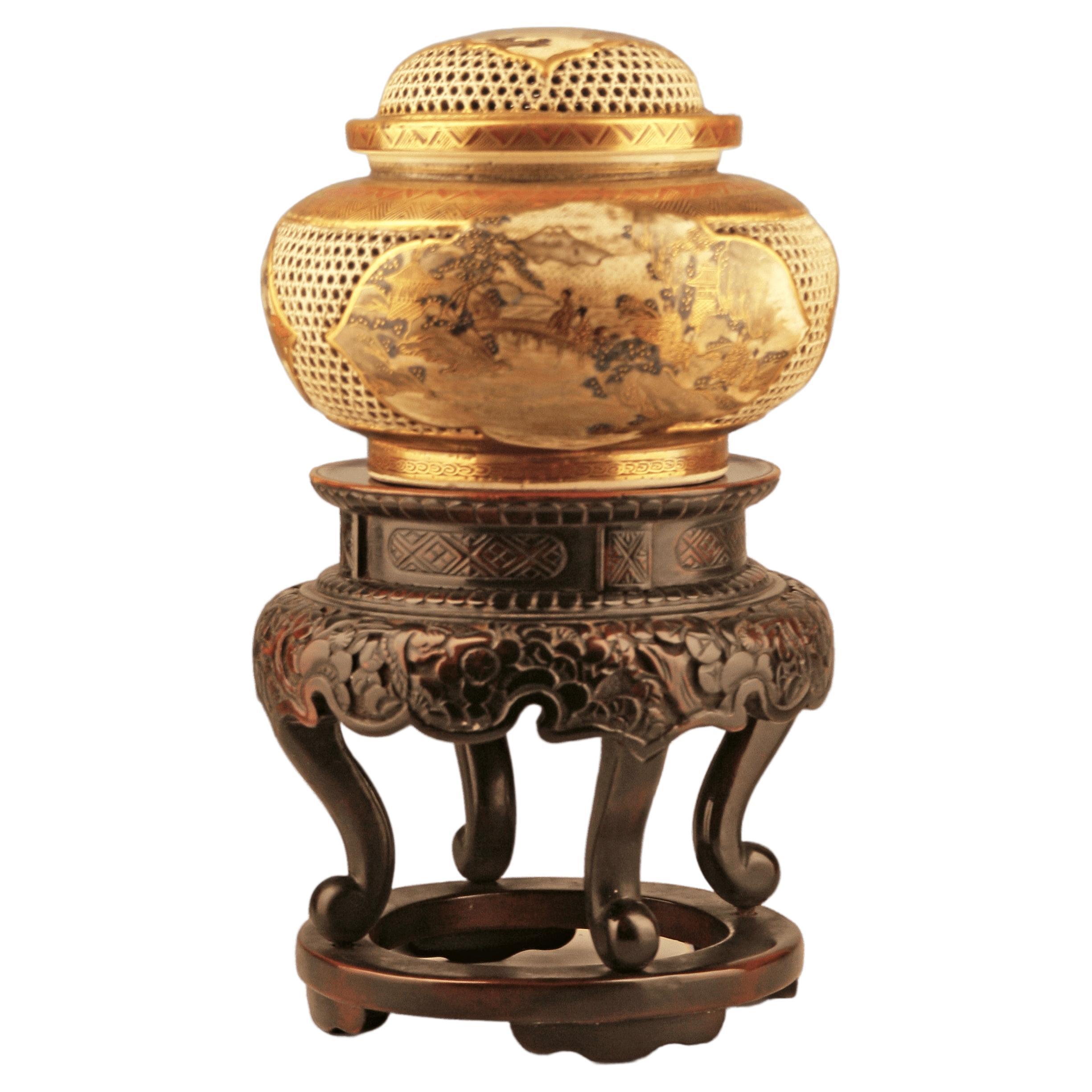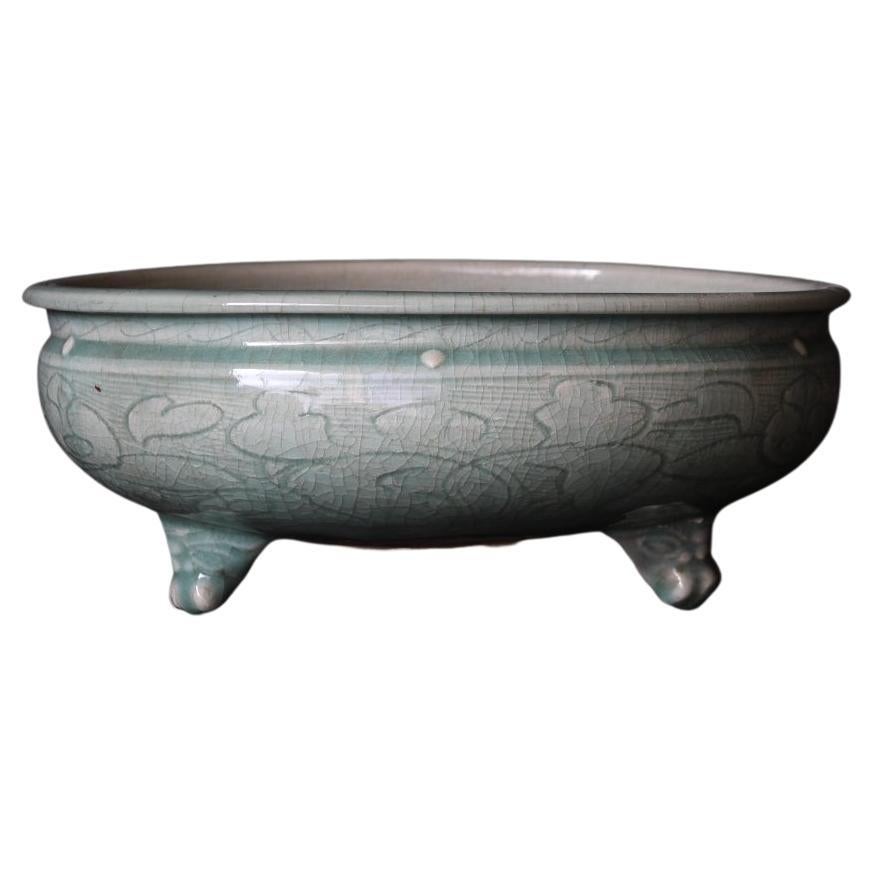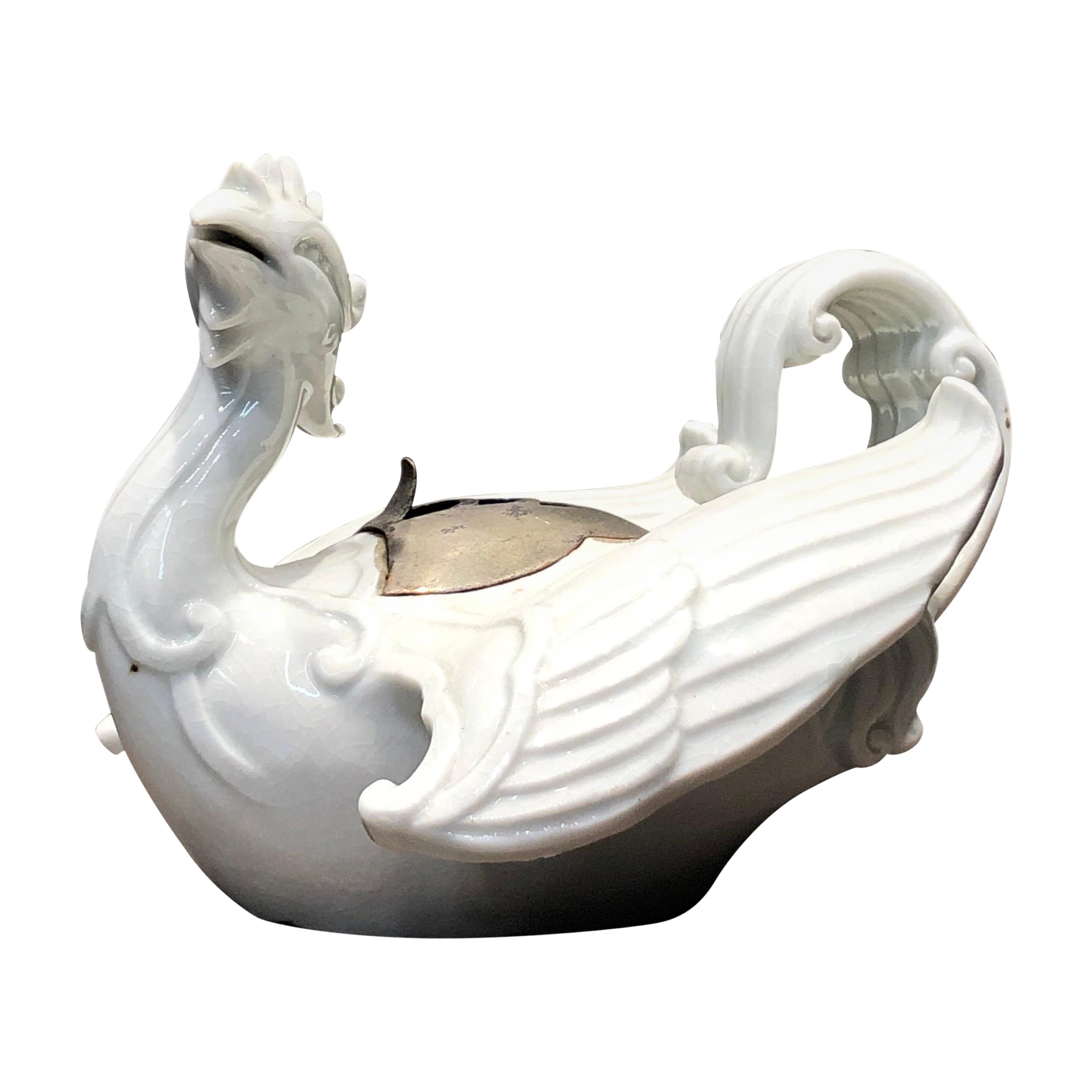Items Similar to Japanese antique pottery lion-shaped incense burner / 17th - 18th century / Edo
Want more images or videos?
Request additional images or videos from the seller
1 of 21
Japanese antique pottery lion-shaped incense burner / 17th - 18th century / Edo
About the Item
This is a Japanese "Seto" fired pottery incense burner.
Seto is a kiln with a long history in Aichi Prefecture, Japan. (Seto kilns are marked with red circles on the map.)
It is said to have originated around the 13th century.
Seto ware has a long history and has produced many designs of pottery.
And in the Edo period, there were so many types, and various designs and colors were produced.
This item is believed to be pottery made in the early to mid-Edo period, around the 17th or 18th century.
A lion is a divine beast introduced from ancient China, and it can be said that it is a classic motif.
It is still loved as a popular and familiar character in Japan.
The incense burner is one of the utensils that have been used as one of the tea utensils since ancient times, and there are a wide variety of design types.
This lion's incense burner has a lid on the head.
It is the figure of a lion with its eyes wide open and staring at the sky.
The corps is plump and the legs are made short, which is also very cute.
There is an inscription by the author on the belly, but I have been unable to decipher it.
I think that making facial expressions and overall balance is good.
There are no major defects, but there is a small chip on the neck of the lid. This is the area circled in red.
It's not very noticeable so I wouldn't worry too much.
Although it is old, I think that it is in relatively good condition.
In addition, since a similar product was published in the art book, the photograph is posted as a reference material.
A storage wooden box is also included.
How about decorating your room as one of the cute objects?
Weight: 0.95kg
About the Seller
5.0
Platinum Seller
These expertly vetted sellers are 1stDibs' most experienced sellers and are rated highest by our customers.
Established in 2015
1stDibs seller since 2020
1,107 sales on 1stDibs
Typical response time: 4 hours
- ShippingRetrieving quote...Ships From: senzoku, Japan
- Return PolicyA return for this item may be initiated within 7 days of delivery.
More From This SellerView All
- Japanese antique pottery bowl/17th century - 18th century/Karatsu "Katakuchi" boLocated in Sammu-shi, ChibaKaratsu is a historic kiln located in Saga prefecture during the Momoyama period (1573~). The location of the Karatsu kiln is indicated by a red circle in the photo. This is a "katak...Category
Antique 17th Century Japanese Edo Pottery
MaterialsPottery
- Japanese antique wooden small Buddha statue / Edo period / 17th to 18th centuryLocated in Sammu-shi, ChibaThis is a wooden Buddha statue made during the Edo period in Japan. The material is cypress wood. After that, it is painted white, then covered with black lacquer, and then painted o...Category
Antique 17th Century Japanese Edo Figurative Sculptures
MaterialsCypress
- Japanese Edo period vase/17th to 19th century/Antique vase/Natural glazeLocated in Sammu-shi, ChibaThis is a Tokoname ware pot made around the Edo period. Tokoname ware is one of the oldest kilns in Japan. Tokoname is a kiln located in Aichi prefecture, Japan. (Tokoname kiln is ma...Category
Antique 17th Century Japanese Edo Vases
MaterialsPottery
- Antique Vases in Southern China / Small Vases / 16th to 17th CenturiesLocated in Sammu-shi, ChibaIt is believed that pottery baked in southern China in the early Ming dynasty was imported into Japan. It is a small size. The upper part is slightly ...Category
Antique 15th Century and Earlier Chinese Ming Antiquities
MaterialsPottery
- Japanese Antique Pottery Hanging Vase/Edo/1800s/Boat-Shaped VaseLocated in Sammu-shi, ChibaThis is a black-glazed boat-shaped pottery made in the late Edo period of Japan. This will be a hanging vase. Pour water directly into this and decorate the flowers. Also, perhaps this is a pottery called Seto-yaki. Seto is an ancient kiln located in Aichi Prefecture. Various shapes and colors were produced there, and in the late Edo period, dark glazed pottery was also produced. When a dark brown glaze is applied, the areas with thick glaze look black, and the areas with thin glaze look brown. I put water directly into this and left it for a day, but there was no water leakage. I would say it is in very good condition. Although it is a small item, it has a very strong presence. It has a glossy and elegant appearance. There are many types of Seto pottery...Category
Antique 19th Century Japanese Edo Vases
MaterialsPottery
- Japanese antique pottery small incense burner/bonsai pot/1868-1920Located in Sammu-shi, ChibaThis is believed to be a small incense burner made in Japan during the Meiji and early Taisho periods (1868-1920). The design is very simple but b...Category
Antique Late 19th Century Japanese Meiji Ceramics
MaterialsPottery
You May Also Like
- Antique Iwayaki Earthenware Edo Incense Burner of a Turtle 19th Century Japan, JLocated in Amsterdam, Noord HollandNicely made and large incense burner or Okimono of a turtle. In earthenware with nice patina. Shimane Prefecture Iwayaki (Nagahama Yaki) Turtle figurine. The head and part of the bac...Category
Antique 19th Century Japanese Edo Antiquities
MaterialsEarthenware
- 17th-18th Century, Edo, A Set of Japanese Samurai ArmorLocated in Sampantawong, THA set of Japanese Samurai armor. Age: Japan, Edo Period, 17th - 18th Century Size: Height 190.5 C.M. / Width 60 C.M. Condition: Nice condition...Category
Antique 17th Century Japanese Antiquities
MaterialsMetal
- Japanese Edo-Meiji Period Satsuma Incense Burner (Koro) and Wooden Support TableLocated in North Miami, FLJapanese 19th century Edo-Meiji Period Satsuma stoneware incense burner (Koro) with small wooden support table By: unknown Material: ceramic, stoneware, wood, enamel, paint Techniqu...Category
Antique 19th Century Japanese Edo Antiquities
MaterialsEnamel
- Celadon Incense Burner with Peony Arabesque Design/Chinese Antique/14th-17th CLocated in Kyoto-shi, KyotoThis is a Celadon three-legged incense burner with peony arabesque design. Since the 14th century, Dwarf sedge was planted in this pot to decorate the tea room, so in Japan it is ...Category
Antique 15th Century and Earlier Antiquities
MaterialsCeramic
- White China Fenix Figured Incense Burner, Edo PeriodLocated in Chuo-ku, TokyoIncense burner with three-dimensional molding of Hirado ware(Origin in Hirado, Nagasaki prefecture) of the Edo period. Hirado ware is very famous for it...Category
Antique 18th Century Japanese Antiquities
MaterialsPorcelain
- 19th Century Antique Chinese Bronze Censer, Incense BurnerLocated in Stamford, CTA bronze censer or also known as a incense burner from the 19th century. This incense burner has great detailing with handles in the shape of bonsai trees. The center section has a e...Category
Antique 19th Century Chinese Antiquities
MaterialsBronze
Recently Viewed
View AllMore Ways To Browse
Cambodian Pot
Antique Wicker Baby Carriages
2 Wheel Buggy
Neolithic Amphora
Ancient Hitching Post
Portable Metal Rolling
Schist Statue
Antique Lotus Shoes
Ruo Shen
Lee Furniture Taiwan
Ghost Figurine
Gandhara Stucco
Bactrian Weight
Blue Chinese Ceramic Horse
Hermes Phallus
Pegu Bronze
Bamboo Food Carrier
Chinese Dragon Lantern Stand
